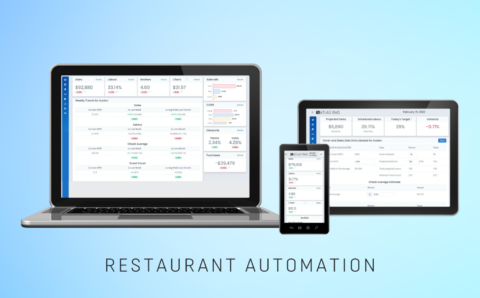
Technologies are an inherent part of any industry. Currently, 30% of financial companies are implementing a digital transformation strategy. If you are ready to begin your business digitalization, it is vital to choose the appropriate technology stack. Python possesses wide popularity within the financial sector, as major financial institutions and hedge funds, such as JPMorgan Chase, Goldman Sachs, and Bridgewater Associates, have heavily invested in this programming language as a primary tool for their quantitative research and trading strategies. It offers a highly versatile nature and an extensive range of robust additional tools, like frameworks and libraries, that complement its core capabilities.
The rich Python ecosystem has enhanced its relevance for finance professionals, covering analysts, developers, and data scientists. Syntax and specialized libraries ensure the accelerated Python development and implementation of complex financial algorithms and provide finance professionals with efficient data processing and analysis capacities. With these details, Python has become an indispensable tool, empowering the finance industry to drive growth and extract valuable insights from financial data.
Table of Contents:
Benefits of Python for Finance
Is Python good for finance? Yes, because for establishments of any scale, it gives the opportunity to enhance establishments’ work in the field of finance significantly. Analysts, developers, and data scientists are increasingly turning to Python due to the following core advantages of Python in finance.
Simple but powerful algorithms
One standout benefit of Python for the financial sector is its simplicity and powerful algorithms. The language’s clear and concise syntax help rapidly develop and comprehend complex financial algorithms. Such simplicity allows finance experts to quickly prototype and implement various models and strategies, saving valuable time and effort.
In practice, Python allows traders to prototype and test trading algorithms quickly, enabling them to build both simple and sophisticated strategies much quicker. Such agility accelerates decision-making, boosting overall business efficiency. Bankers also benefit from Python’s data analysis capabilities, supported by libraries like Pandas and NumPy. The tools streamline the process of identifying trends, patterns, and risks in vast datasets. In addition, predictive models for credit scoring, investment analysis, and portfolio optimization are also possible with Python’s capacity. Brokers utilize Python for a range of purposes, covering such tasks as backtesting trading strategies and creating interactive client dashboards. The visualization libraries may come in use for brokers, helping present data in visually compelling ways, facilitating data-driven decision-making, and enhancing the client journey.
Rich ecosystem of frameworks and libraries
Python’s rich ecosystem of frameworks and libraries is another compelling purpose to opt for it for finance applications. The availability of libraries such as Pandas, NumPy, and Scipy provides powerful tools for data manipulation, analysis, and statistical computations. These libraries allow finance professionals to perform tasks like data cleansing, time series analysis, risk modeling, and more with relative convenience and rapidity. Additionally, Python integrates seamlessly with other popular data analysis tools, such as Jupyter Notebooks and Tableau, enabling interactive and visually appealing presentations of financial data.
Fast web development
For web development in the finance sector, Python gives efficient and solid frameworks like Django and Flask into developers’ hands. These two options provide a strong foundation for designing secure and reliable financial web applications ensuring smooth and top-tier customer interactions. With the scalability and the rich set of built-in features like an authentication system and multiple caching mechanisms, Python web development professionals can quickly create custom web solutions tailored to the specific needs of financial institutions. This may refer to trading platforms, portfolio management systems, and risk assessment tools.
Interactive data analytics
One of the main uses of Python in finance is interactive data analytics. With its specific tools for data analysis, like NumPy and Scipy, Python provides a powerful platform for conducting interactive data analytics in finance. Employing the libraries, finance analysts can productively and accurately analyze and manipulate large datasets, perform calculations, and represent results in custom visualizations as needed. Data interactivity enables quick exploration of financial data, identification of patterns, and extraction of insights, which boosts the company’s productivity as a whole. The popular visualization libraries like Matplotlib, Seabron, and Plotly allow for the development of compelling charts and graphs, decreasing the effort to explain complex financial concepts to stakeholders.
Predictive analytics
Predictive analytics is a core activity of finance, and Python delivers robust support through libraries like Scikit-Learn and TensorFlow. These libraries facilitate the development and deployment of predictive models for procedures associated with credit scoring, fraud detection, and asset price prediction. Python’s extensive collection of machine learning algorithms simplifies experimentation and helps finance professionals select the most effective approach and strategy for an arisen challenge.
If your project comprises analyzing financial data, creating trading solutions, or developing machine learning models, Python provides the necessary tools and resources to streamline your business workflows and drive comprehensive insights. Embracing Python can significantly enhance your establishment’s productivity and effectiveness in the finance domain. With an extensive set of libraries, Python will help your team implement predictive models and develop robust web products to drive comprehensive insights within the fully-fledged web-based hub.
Technology challenges in finance
In the financial sector, companies are confronted with a row of challenges to be solved to stay ahead in the market. Additionally, the implementation of any new technology entails additional expenses for financial institutions, which may be an issue for businesses with a limited budget. According to the insights gathered by Statista, roughly 75% of companies tend to adopt big data analytics, cloud computing, e-commerce and digital trade, and AI technologies between 2023 and 2027, while more than 86% plan to adopt digital platforms and apps. For this, Python serves as a powerful instrument in addressing technology obstacles in the finance sector, as it offers solutions that cater to the unique needs and features of this industry, let’s explore how it happens.
Data processing
One of the critical challenges in finance is data processing. With the increasing volume and complexity of financial data, traditional processing methods, like manual data entry, spreadsheet-based calculations, and simple database queries, often come out insufficient. They may have been suitable for handling smaller datasets and straightforward tasks but become inefficient and inadequate when dealing with the increasing volume and complexity of financial data. Python’s extensive libraries, such as Pandas and NumPy, allow for efficient data management, research, and modification. With their help, finance experts can easily manipulate and process large datasets, execute complex assessments, and retrieve the necessary details as a result. Scalability and ability to integrate with distributed computing frameworks are the core Python use in finance, which can also further enhance its capabilities in data processing for finance.
Costs for technology in the financial sector
Costs associated with technology in the financial sector have always been a widely-faced concern. Implementing new technologies can be pretty costly, and companies often need to allocate significant budgets to adopt cutting-edge solutions. For instance, according to Marketing AI Institute, large financial institutions like Bank of America have been testing AI features in Microsoft Office 365 productivity apps. Some of them are paying a flat fee of $100,000 for up to 1,000 users for one year as part of the pilot program. Such high costs pose challenges for many companies in the financial industry, especially smaller firms with limited resources.
As an open-source programming language, Python is a cost-effective solution for institutions. Unlike proprietary software, Python allows organizations to access a wide range of libraries and frameworks without the burden of licensing fees. Such a cost-benefit, united with Python’s robust performance and scalability, makes it an attractive option for financial firms seeking to optimize their technology investments.
The rise of real-time analytics
Real-time analytics are core for many corporations within the finance sector. With markets moving by leaps and bounds, the ability to analyze and respond to data dynamically is vital to support wise decision-making, competitiveness, and relevance for clients. Within such a need, Python provides appropriate instruments like Dask for processing and analyzing data in real-time. Combined with Python’s integration with streaming frameworks, finance professionals can adopt the power of real-time data analytics to build timely and informed strategies.
Increasing data volumes
The constant growth of data volumes presents a significant issue for many financial institutions. According to Statista, the total amount of data created, captured, copied, and consumed globally is forecast to increase rapidly, reaching 64.2 zettabytes in 2020. Over the next five years up to 2025, global data creation is projected to grow to more than 180 zettabytes Python can solve this challenge with its versatile libraries, which enable efficient handling and investigation of vast loads of data. Libraries PySpark allow for distributed computing, enabling finance professionals to scale their data processing powers and handle massive amounts of financial data productively. Using Python for finance, developers can make use of cloud-based infrastructure, further enhancing the suitability for managing the increasing data volumes in the industry.
Why Python for Your Business?
Discover how Python’s versatility and efficiency can streamline your development, cut costs, and drive innovation.
Solutions
Python offers a wide range of solutions that cater specifically to the requirements of the finance sector. Let’s determine how Python can handle the priorly described challenges and provide effective solutions for the financial industry.
Financial Web Apps
The powerful web frameworks founded on Python, like Django and Flask, enable the development of error-free and flexible financial web applications. These frameworks provide features such as user authentication, data modeling, and API integration, which are integral for the implementation of tailored solutions for various financial aspects and procedures. Python’s simplicity and extensive library support allow developers to be borderless within their capabilities and implement any desired bespoke solution, like budget and expense tracking software, finance dashboard, risk evaluation web platform, or any other product.
Digital Transformation
Python plays a crucial role in driving digital transformation in the finance industry. With its vast ecosystem of libraries and frameworks, Python enables financial institutions to automate processes, optimize both internal and external processes, as well as take operational efficiency to the next stage. Python’s capabilities in data processing, machine learning, and artificial intelligence enable financial organizations to leverage technologies like robotic process automation (RPA), fraud detection, customer segmentation, and chatbots for improved customer service, risk management, and compliance with essential domain regulations.
Data Visualization and Financial Dashboards
Python provides powerful tools for data visualization, like Matplotlib, Seaborn, and Plotly, that make it simpler to present complex financial data in a visually appealing and intuitive manner. Libraries designed for data visualization enable the creation of interactive charts, graphs, and dashboards to convey insights effectively. These visualization capabilities enable finance professionals to get a more clear view of the current financial conditions, as well as make the whole explanation process easier to comprehend.
Financial Data Analytics
With the capacity of Python’s extensive ecosystem of data analytics libraries, such as Pandas, NumPy, and Scipy, finance employees are allowed to perform advanced data analysis tasks. These libraries enable data cleansing, manipulation, exploratory research, time series insights, as well as statistical computations. Python’s integration with machine learning libraries like Scikit-Learn and TensorFlow allows for predictive analytics, credit scoring, fraud detection, and asset price prediction. Consequently, with Python’s data analytics capabilities, finance establishments can compile insights from the given information, determine trends and tendencies, and make relevant decisions toward success.
Use Cases
Answering the question “is Python used in finance?”, it’s worth noting that it has proven to be a credible and solid programming language applied for various cases within the financial sector. Being rich in versatile tools, Python is a demanded technology driving innovation and efficiency in the finance industry.
P2P Lending
Peer-to-peer lending platforms have surpassed the usual lending landscape and providing an alternative to traditional banking channels. Their core concept is connecting borrowers straightforwardly with individual lenders. Python takes a substantial part in powering such platforms, with Zopa being an outstanding illustration. The use of Python in finance in the context of P2P lending lies in its robust data processing capabilities, which make it well-suited for handling large and complex datasets. Aside from that, data analysis and visualization libraries of Python facilitate loan performance analysis on P2P lending platforms. With tools like Pandas, NumPy, and others, finance professionals can analyze historical loan data, monitor portfolio performance, and identify trends or patterns that impact loan repayment rates. This programming language’s flexibility and a huge variety of tools and libraries boost P2P lending platforms like Zopa to handle data processing, conduct risk assessments efficiently, implement matching algorithms, and analyze loan performance. Leveraging Python, these platforms can streamline lending processes, enhance risk management, as well as deliver borrowers and lenders a transparent and user-friendly experience.
Banking Software
Python is actively employed in developing banking software, as seen in the case of Revolut. Here, Python is an integral technology in the backend development of Revolut’s banking software. Python frameworks like Django and Flask provide the foundation for building scalable and robust financial web applications. Additionally, Python’s compatibility with the integration of external data sources, such as market data feeds and regulatory APIs, enriches the data analysis capacity. What is more, Python’s scripting capabilities are utilized in automating various processes within Revolut’s operations. Python scripts enable the automation of routine tasks like data imports, report generation, and reconciliation processes, reducing manual effort and enhancing performance efficiency.
Trading platforms
Python is extensively applied in designing trading platforms, exemplified by the success of Robinhood’s platform. Python’s flexibility, extensive library support, and real-time data processing capabilities are suitable for handling complex trading functionalities. Trading platforms like Robinhood require up-to-date market information for accurate pricing, order execution, and portfolio management. For this, Python’s integration with financial data providers allows developers to retrieve real-time market data seamlessly. Additionally, Python’s libraries for data analysis, like Pandas and NumPy, allow for in-depth technical analysis and the implementation of algorithmic trading strategies. With Python use, trading platforms similar to Robinhood can rapidly cope with order placement, order matching, and trade execution, ensuring reliable and fast trade execution for all engaged parties while serving as a trustworthy intermediary.
Need Expert Python Development?
Our Python experts deliver scalable, secure, and high-performing solutions tailored to your business needs.
Fintech companies using Python
Many leading FinTech leaders have already embraced the capabilities of Python. Various Python finance project teams have recognized its value in driving innovation and delivering efficient solutions.
J.P. Morgan
J.P. Morgan is one of the largest financial institutions globally and employs Python across a range of areas within its establishment. Python is instrumental in quantitative research and algorithmic trading, where it empowers J.P. Morgan’s quantitative finance analysts and traders to develop and implement complex trading strategies. The adoption of Python-based libraries, like NumPy, Pandas, and Scikit-Learn, provides the company with enhanced data analysis, modeling, and machine-learning capabilities.
Bank of America
Bank of America is considered to be one of the largest banking institutions in the United States. This establishment has applied the value of Python in powering performance and operational efficiency. Python is extensively used in tasks related to data analysis and visualization, allowing Bank of America to gain valuable insights from huge datasets. Analysts of this bank use the appropriate set of Python libraries to fulfill data exploration, assemble reports, and design interactive visualizations for better understanding.
Stripe
Stripe is another leading global payment processing platform that relies heavily on Python to support its fintech infrastructure. Python enables Stripe to handle large volumes of transactions efficiently and securely. Python’s flexibility allows for easy integration with external systems and APIs, facilitating seamless payment processing and reconciliation. The ecosystem of Python empowers Stripe’s risk management and fraud detection efforts. Last but not least, by utilizing Python, Stripe can create and deploy machine learning models to research transaction patterns, detect anomalies, and prevent fraudulent activities.
Venmo
Venmo, a popular peer-to-peer payment platform, has adopted Python to deliver a seamless and user-friendly payment experience. Frameworks like Flask and Django enable Venmo to handle secure user authentication, transaction processing, and integration with banking systems. Furthermore, Python’s libraries for data manipulation and financial analysis allow Venmo experts to aggregate transaction data, calculate spending patterns, and offer personalized financial insights to its users.
Python has become an indispensable tool for finance companies offering top-tier customer service. Its power is capable of addressing the complex challenges faced by the finance industry, delivering innovative solutions, securely streamlining processes, and providing valuable insights to customers.
If you are eager to create a product or service for the financial industry, consider partnering with PLANEKS. We offer Python software development services that are aimed at resolving your core business challenges, refining your workflow, and boosting efficiency. Our team of professionals will eagerly support you in achieving the absolute potential of your business and applying Python capacity to cater to your project requirements. Enhance your financial institution today with the assistance of PLANEKS experts – contact us today.

EuropaFoodXB
Our team modernized EuropaFoodXB’s eCommerce & CRM platforms, resulting in faster order processing & a user-friendly online shopping experience.

Restaurant Management
Delivered a fully integrated cloud system for restaurants, providing a centralized dashboard for data management and increased profitability.

